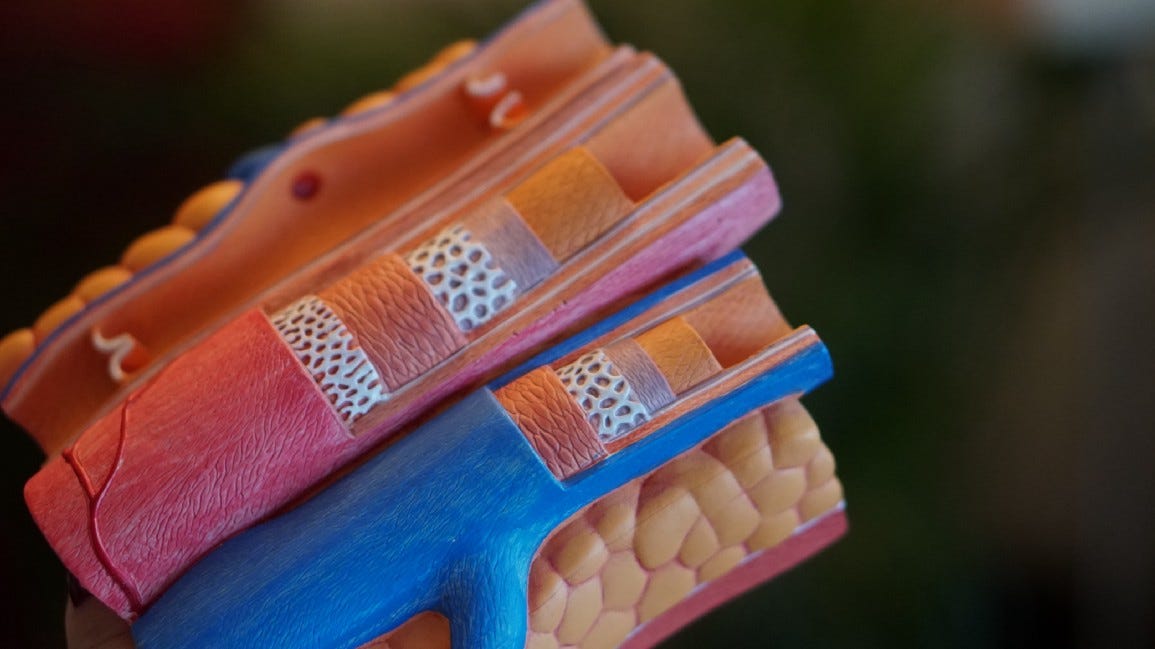Arterial Calcification And Its Effect On Atherosclerotic Plaque Formation
It’s a case where calcification accelerates the entire issue, which just worsens the entire issue of heart disease.
The coronary artery calcification (CAC) rating is an important consideration in patients with heart disease. What we can tell from this reading is that:
Coronary calcification occurs when calcium builds up in the plaque found in the walls of the coronary arteries, which supply blood to the heart muscle. The presence of coronary calcification can be an early sign of coronary artery disease, which can cause a heart attack.
To understand how we can calcify our arteries, we’d have to look at the concept of fouling in pipes.
A pipe is a hollow cylindrical object that allows for the transportation of fluids. We see them in many areas — they’re responsible for transporting drinking water to many homes, as well as transporting wastewater away from homes for treatment.
Industrially, pipes are used for large-scale fluid transportation too. The country of Nigeria makes use of large pipelines to transport crude oil.
Understanding fluid mechanics and modelling the flow of fluids in pipes was excruciatingly painful as a chemical engineering student — and now the same fate befalls my young students as I have to teach them fluid mechanics, unfortunately.
Biologically, we do have pipes in our bodies too. We have arteries that transport oxygen-rich blood to the rest of the body, while the veins bring oxygen-poor blood back to the lungs for oxygen replenishment so that the heart can continuously pump oxygen-rich blood to every cell in the body that needs it.
Fouling is a term that is used extensively in technical applications. It is stated in this article (together with some relevant images on fouling) that:
Fouling stands in technical applications, for the unwanted growth or formation of deposits on surfaces. Fouling occurs on the inside of pipes, machines or heat exchangers. Either the substances responsible for fouling are already dissolved in the liquid. In water, for example, these are calcium carbonate and similar salts, in crude oil is next to others paraffin. Or solids are introduced together with the liquid from the outside, with the feed into a system. These are sand, mud or organic material. This is especially the case if well water or water from lakes or the sea is used.
Calcium carbonate is one of the culprits in fouling, especially in water systems. The problem is exacerbated in systems that use hard water. Because when there is a good amount of dissolved calcium carbonate in hard water, this calcium carbonate can precipitate out as a solid that covers the surface of anything that is in contact with it — we call that a scale (scaling) problem.
We do have to be concerned with the fouling phenomenon because calcium carbonate and calcium phosphate are the two major constituents of our bone minerals.
Imagine if the osteoclast cells in our bones were working overtime at converting bone mineral into solubilised calcium for resorption back into the blood:
How Osteoporosis Isn’t Just About A Calcium Deficiency
The adult human body’s skeleton comprises 206 bones. They support our frame and our structure. We need them to stand up and walk. We need them to move about.
Or if we were consuming calcium carbonate supplements, because calcium carbonate is the cheapest calcium mineral for supplementation there is out there. Having the proper calcium intake but not the necessary Vitamin K2 could be problematic.
The problem with this inorganic calcium fouling is that it can lead to additional biofouling.
The deposits of precipitated calcium on the pipe walls increase the internal roughness of the pipe, which provides more surface area for biological microorganisms to attach on and form a biofilm, which we can define as “biofouling”.
As its name suggests, biofouling is a fouling phenomenon that is associated with biological organisms. We see that in our toilets, especially when there is a regular growth of bathroom slime that we need to be consistently clearing out of our toilets:
Bathroom Slime May Be Icky, But It Operates In Ways Similar With Other Parts Of Our Body.
One of the most annoying household chores that I didn’t really like to do was to clean the bathroom.
Keep reading with a 7-day free trial
Subscribe to The Biochemistry Of Human Health to keep reading this post and get 7 days of free access to the full post archives.




